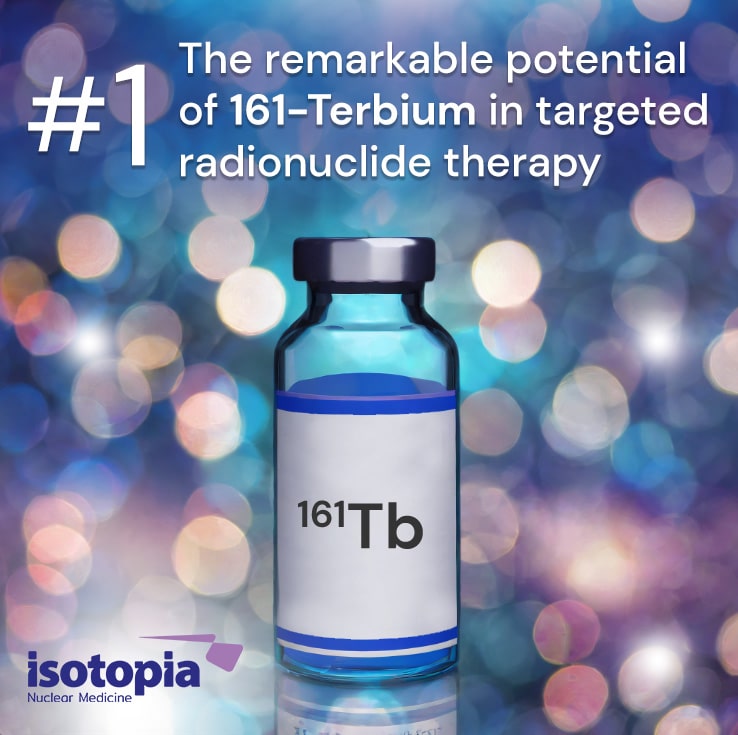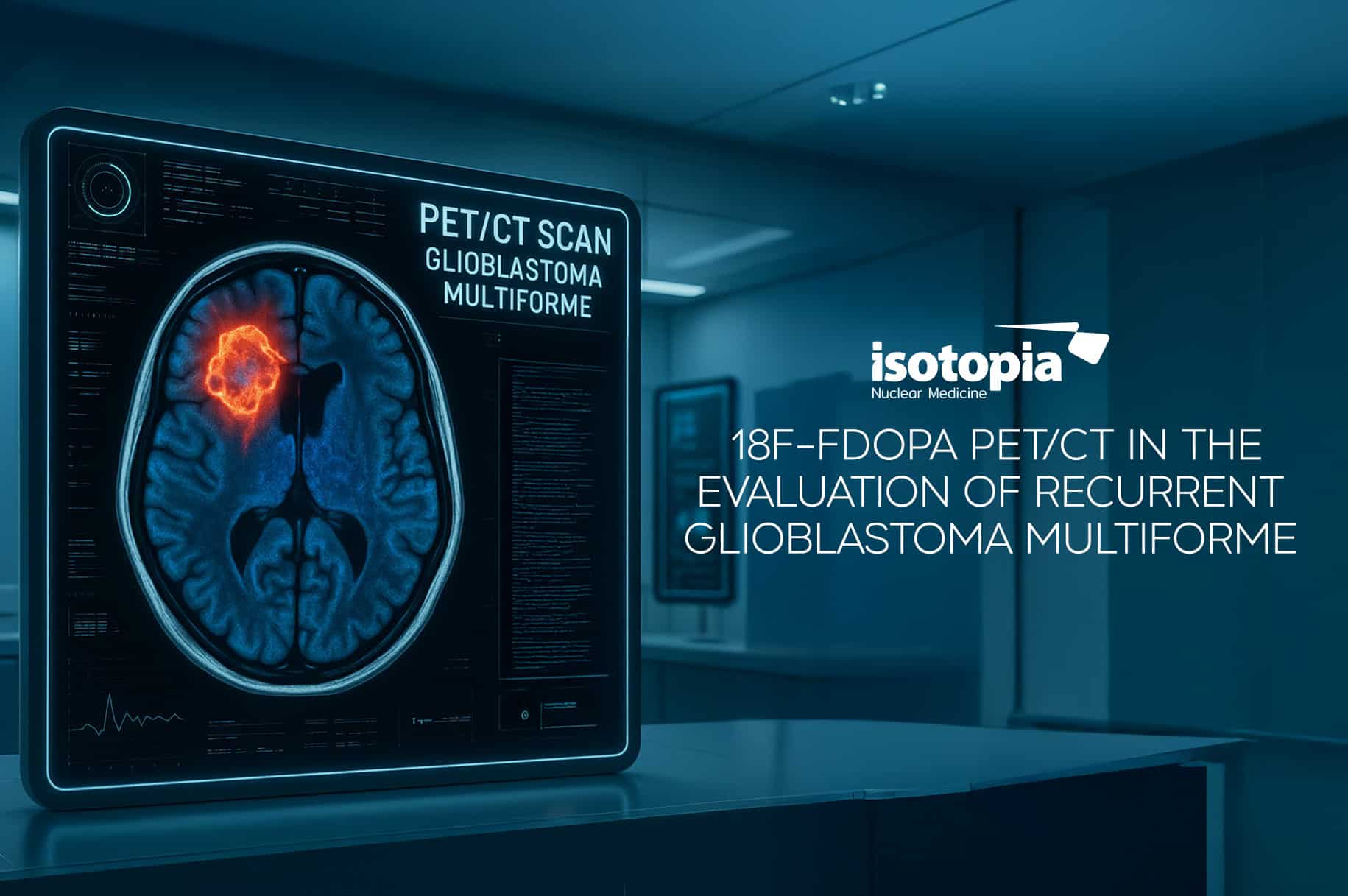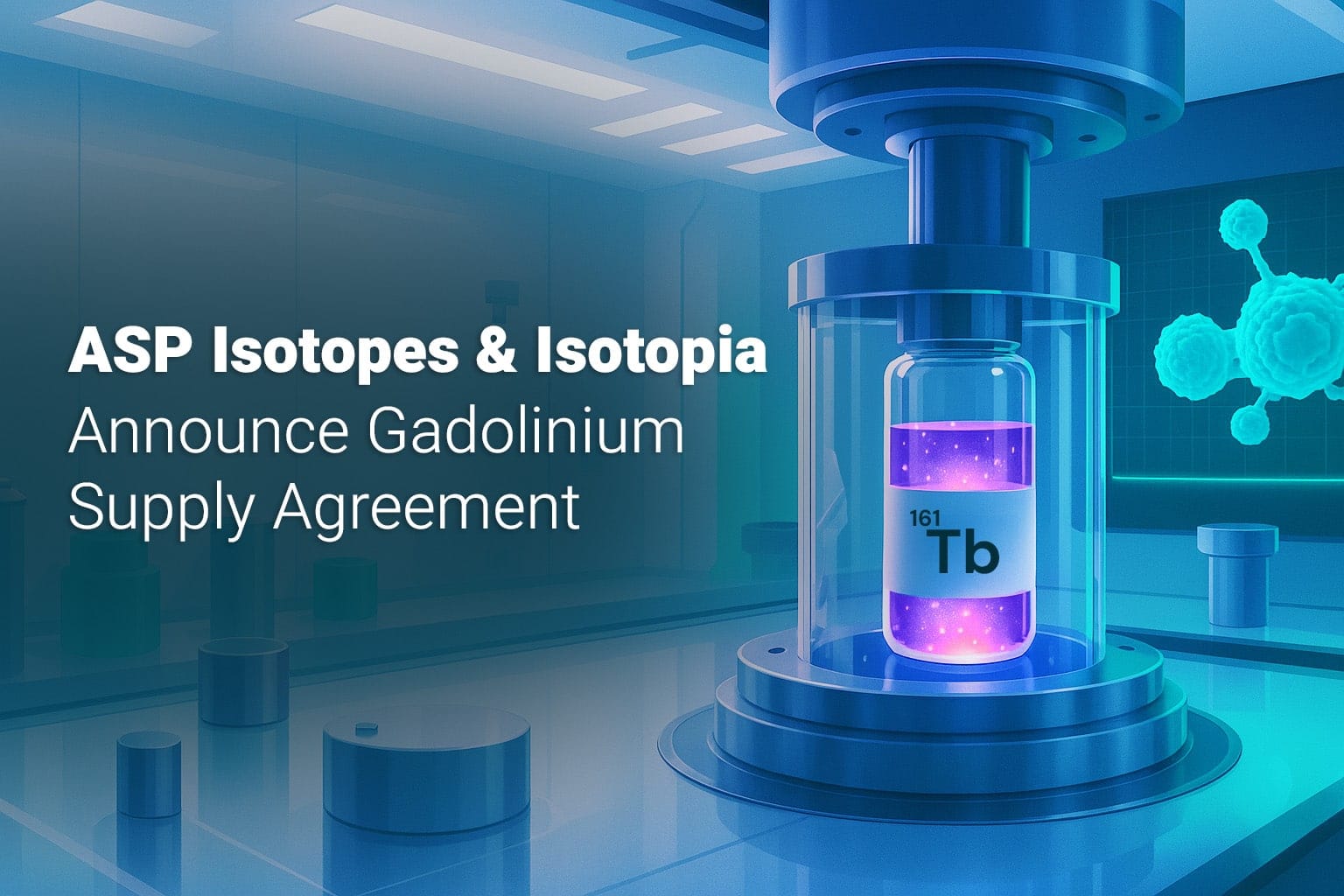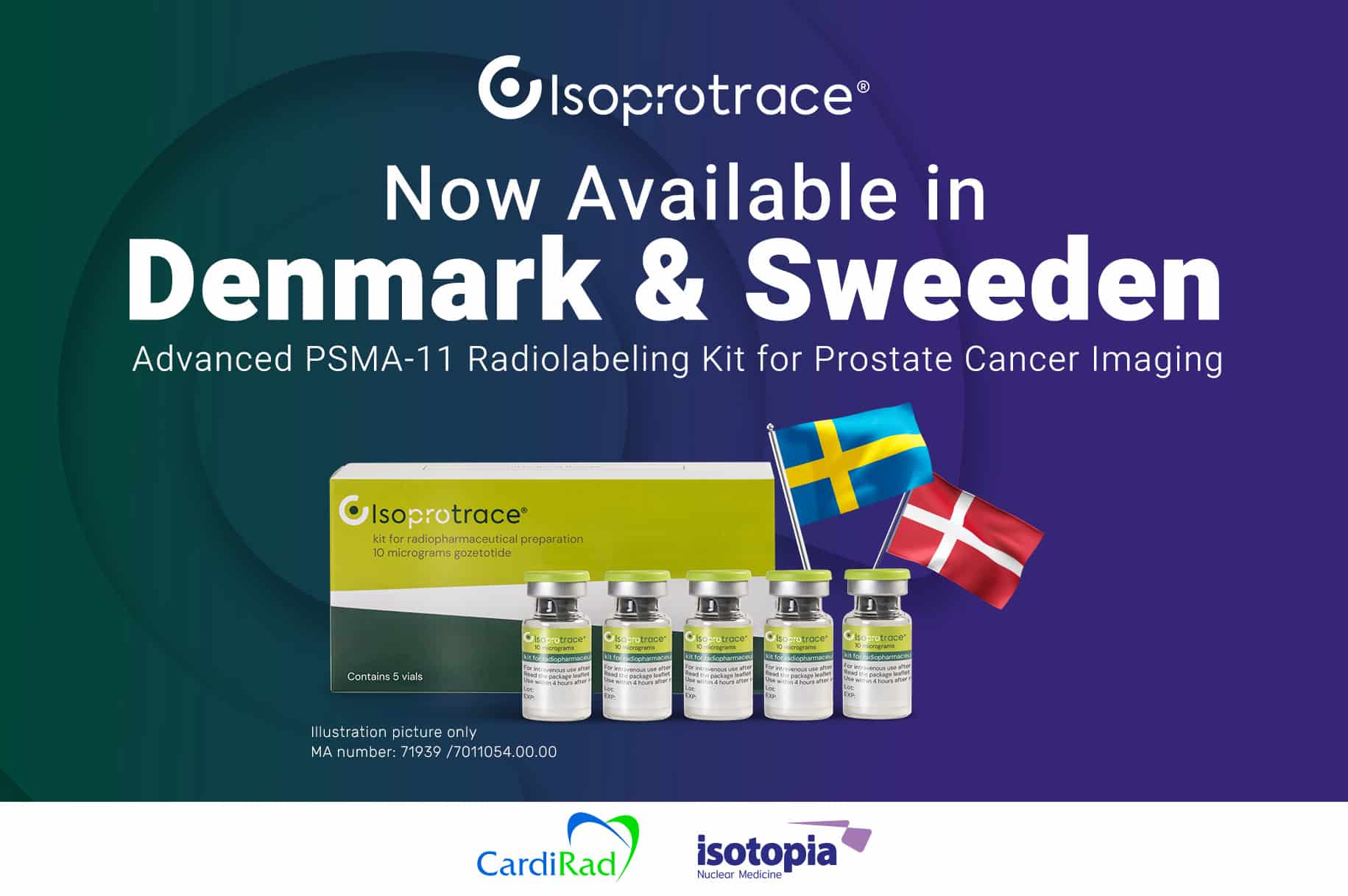Abstract:
From a radiopharmaceutical point of view, 161-Terbium (161Tb) and 177-Lutetium (177Lu) are both radiolanthanides that show similar decay characteristics and coordination chemistry [1]. This means that 161Tb can be stably coordinated with a DOTA chelator and used in combination with a number of small molecules, peptides, and antibodies currently employed with 177Lu [1].
In terms of production, 161Tb can be produced by neutron irradiation of enriched 160Gd targets in nuclear research reactors [1]. The final product, 161TbCl3, can be obtained at an activity concentration of 11-21 MBq/μL with ≥99% radionuclide and radiochemical purity. The DOTA chelator can be radiolabeled with 161Tb or no-carrier-added 177Lu at the molar activity deemed useful for clinical application, even at the two-week time point after the conclusion of chemical separation. It is worth mentioning that in comparison to carrier-added 177Lu, no-carrier-added 177Lu has longer shelf-life because there is no contamination with long-lived metastable Lu-177m (half-life 160.1 days), which requires radiation safety management and secure waste storage.
However, 161Tb may show superior therapeutic efficacy compared to 177Lu due to the co-emission of a substantially larger number of conversion and Auger electrons within a favorable energy range. For example, for 100μm-diameter and 10μm-diameter spheres, 161Tb can deliver a 1.8 and 3.6 times higher dose than 177Lu, respectively, making 161Tb the more suitable candidate for treating micrometastases [2].
A study published in the Journal of Nuclear Medicine compared the effectiveness of 90Y, 177Lu, 111In, and 161Tb in irradiating micrometastases [3]. The study found that 161Tb is a promising radionuclide because it combines the advantages of a medium-energy β− emission with those of Auger and conversion electrons while emitting fewer photons than 111In. In a 100-μm metastasis, the dose delivered by 90Y was only 1.36 Gy, compared with 24.5 Gy for 177Lu, 38.9 Gy for 111In, and 44.5 Gy for 161Tb [3]. This suggests that 161Tb might be better suited to the treatment of minimal residual disease.
Beta electrons and Auger electrons are two different types of particles that are emitted from an atom. Beta electrons are emitted from the nucleus of an atom during beta decay. On the other hand, Auger electrons are emitted not from the nucleus but from the atom itself, during a process called the Auger effect.
The Auger effect occurs when an inner-shell vacancy in an atom is filled by an electron from a higher energy level, resulting in the release of energy. This energy can be transferred to another electron, which is then ejected from the atom as an Auger electron. The kinetic energy of the Auger electron corresponds to the difference between the energy of the initial electronic transition into the vacancy and the ionization energy of the electron shell from which the Auger electron was ejected. Due to their low kinetic energy, emitted Auger electrons travel over a very short range, less than the size of a single cell, in the order of less than a few-hundred nanometers. For comparison, the most commonly used beta-particle emitters have a tissue penetration range in the order of up to 1-10 mm, depending on the energy [5].
Beta electrons can cause damage to cancer cells in different ways. They emit a lower energy than alpha particles, but can travel further distances. Because of their lower energy levels, more particles are required to cause lethal damage to cells.
On the other hand, Auger electrons (AE) are very low energy electrons whose energy is deposited over nanometer-micrometer distances, resulting in high linear energy transfer (LET) that is sufficiently potent to cause lethal damage to cancer cells [5]. AEs can cause DNA damage both directly and indirectly via water radiolysis. They can also kill targeted cancer cells by damaging the cell membrane, and kill non-targeted cells through a cross-dose or bystander effect [6].
In summary, both 161Tb and 177Lu have similar decay characteristics and chemical behavior, making them suitable for use in targeted radionuclide therapy. However, the co-emission of conversion and Auger electrons by 161Tb may enhance its therapeutic effect compared to 177Lu. Both isotopes can be produced and purified for clinical use, and studies have shown that 161Tb may be even more effective than 177Lu in reducing the viability of tumor cells.
References
- Gracheva, N., Müller, C., Talip, Z. et al. Production and characterization of no-carrier-added 161Tb as an alternative to the clinically-applied 177Lu for radionuclide therapy. EJNMMI radiopharm. chem. 4, 12 (2019). https://doi.org/10.1186/s41181-019-0063-6
- Hindie, E., Morgat, C., Alcocer-Avila, M.E., & Champion, C. (2019). Radiation doses from terbium-161 compared to lutetium-177 in single tumor cells and micrometastases. European Journal of Nuclear Medicine and Molecular Imaging, 46(suppl1), S115.
- Hindié, Paolo Zanotti-Fregonara, Michele A. Quinto, Clément Morgat and Christophe Champion. Dose Deposits from 90Y, 177Lu, 111In, and 161Tb in Micrometastases of Various Sizes: Implications for Radiopharmaceutical Therapy Elif. Journal of Nuclear Medicine,May 2016, 57 (5) 759-764; DOI: https://doi.org/10.2967/jnumed.115.170423
- Ku, A., Facca, V.J., Cai, Z. et al. Auger electrons for cancer therapy – a review. EJNMMI radiopharm. chem.4, 27 (2019). https://doi.org/10.1186/s41181-019-0075-2

Haim Golan
MD MSc
Chief Medical Officer
Isotopia






